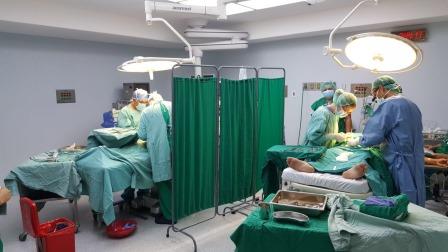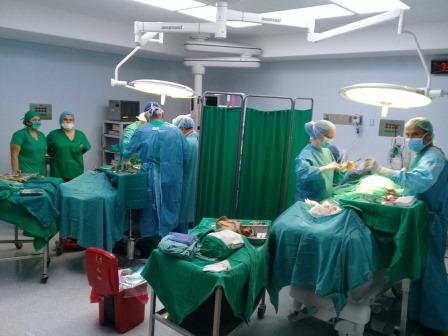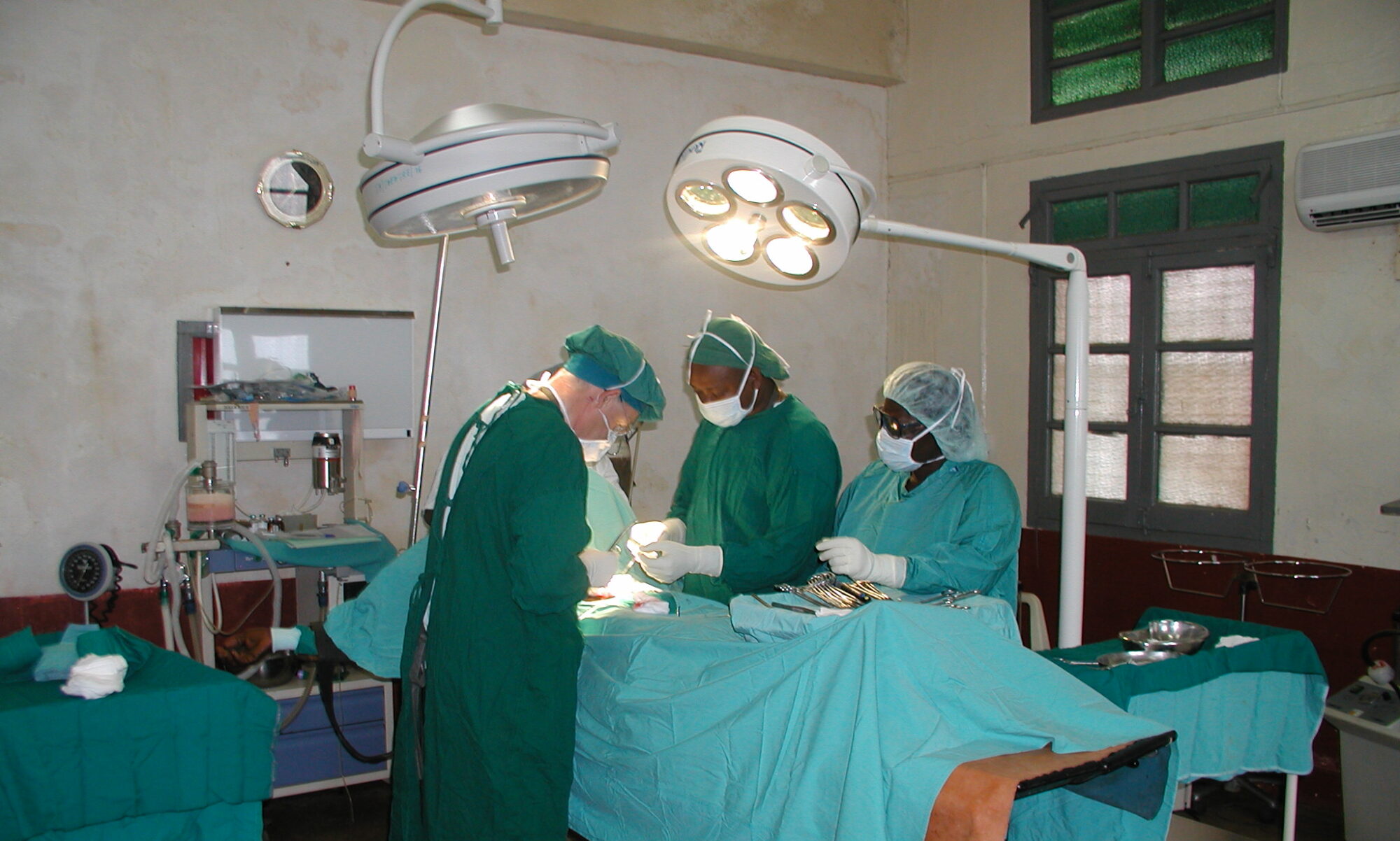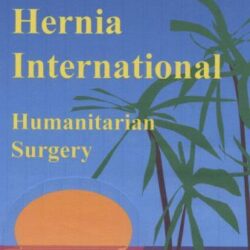MEMORY OF THE “SURGEONS IN ACTION” and “HERNIA INTERNATIONAL” MISSION IN THE GUSTAVO DOMINGO RODRIGUEZ ZAMBRANA HOSPITAL OF SANTO DOMINGO DE LOS COLORADOS (ECUADOR)
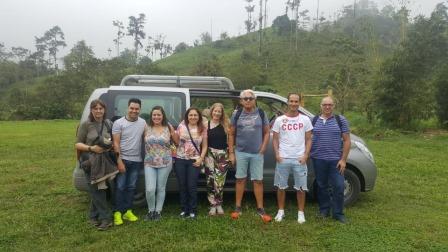
After several months organizing everything by mail, and having had to change some members of the original team (almost up to 59%) that left at the last moment, the date to start for Ecuador came at last. The team was made up finally by 7 members: Cesar Ramirez (surgeon and team coordinator), Antonio Satorras (surgeon), Ana Belén Fajardo (surgeon) Alejandro Unda (paediatric surgeon), Paco Gomez (nurse), Isabel Moreno (anaesthetist) and Yolanda Cabrero (anaesthetist).
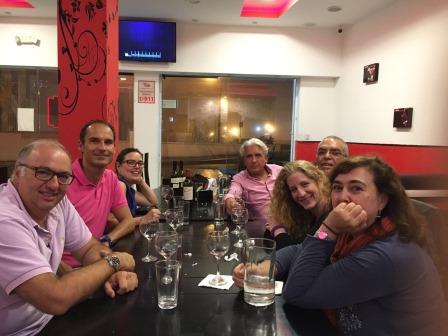
Except for Alejandro, who is from Ecuador and had been there for some time visiting his family and working in other missions as he does every year, and for Yolanda Cabrero who was on guard duty and came a day later, all the other team members met to get acquainted with each other on Friday 29th September in Terminal 4 of Barajas in order to book our luggage in our Madrid-Quito flight at 12.35 p.m. After the first awkwardness in our introductions everything went very well so that with the help of Paloma Gonzalez (of the “Mano a Mano” NGO who works with Iberia) we had not to pay for any extra luggage and we could book without any problem our own bags and the almost 120 kg of medical and surgical material we were bringing for our mission. For Antonio, Ana Belén and Isabel this was their first mission with “Cirujanos en Acción” with this kind of collaboration, as we all the others had already being in previous campaigns.
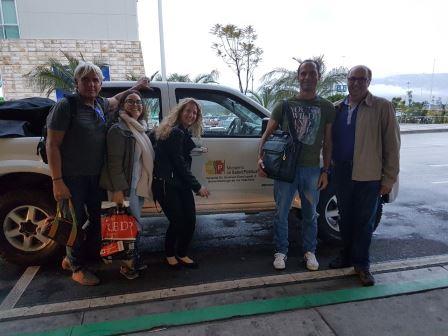
After an 11 hours flight Madrid-Quito flight we landed without problems (at 16.35 p.m. local tme) and passed through customs without any problem. At the terminal Dr. Kathia Tinizaray, who is the second director of the Hospital Gustavo Dominguez Zambrana of Santo Domingo de los Tsáchilas, the centre where we were going to carry out our mission. Kathia is a faithful coworker of the “Cirujanos en Acción” campaigns (or rather their very soul) and is always seeing to it that we are as comfortable as possible from the start. She placed all our luggage in a van and took us to our hotels in the colonial centre of Quito. Just as last year, I decided we would spend the weekend in Quito so as to start for Santo Domingo the day before the mission in order to share walks, meals and suppers those two days so as to be able to meet and get acquainted for the 10 days of intense work waiting for us.
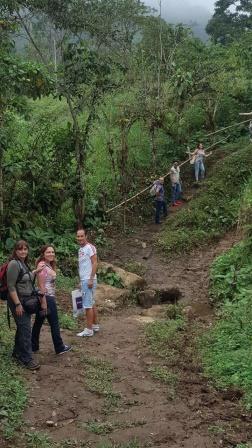
We used the weekend to visit in detail the center of Quito and all its wonderful churches (there is no capital in the world with so many churches so great and beautiful, in such a small place, particularly the churches of the Society of Jesus, the one of St Francis, Carmen Alto, and the spectacular and gothic “Basílica del Voto Nacional”), and the “Virgen del Panecillo” who from its height contemplates, guides and cares for the whole city of Quito. On Sunday October 1st,and after a tiring 4 hours journey by van to Santo Domingo, we arrived at our hotel (the modest Hotel Santander in the outer city neighbourhood) where Dr Kathia Tinizaray and Dr Lenin Falcones, who is Medical Director of the Hospital and surgery chief who has been our most constant and important logistic help during these two weeks in Ecuador.
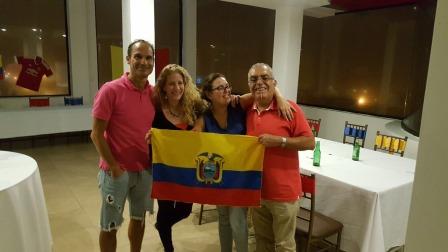
The same Sunday night we went to the Hospital, we unpacked and placed all the material in the operation theater that had been us for our work and, besides, we revised the operation theatre programation that Dr Falcones has prepared for our two weeks. The Gustavo Dominguez Zambrana is a relatively new hospital, but it suffers from the miseries of a health system which is deficient and very badly run from the central administration, so that there are no resources to operate the patients (no laparascopy, and the patients have to buy for themselves even the most basic material to be operated upon,the famous “insumos”, they have no meshes, neither any suture material of the lowest quality) and the waiting lists for the most basic processes lengthen to eternity.
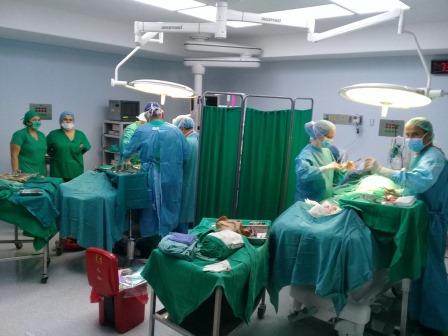
In the morning of October 2nd we were able to begin operating thanks to the great effort of DrFalcones and Francisco, the Anaesthetics coordinator of the Hospital, who had taken care that all patients were programmed with their pre-operatory examination carried out and with the approval for surgery. Every day the patients were given an appointment for 7 in the morning in a room next to the operation theater where part of our team carried out a quick evaluation of all the cases so as to be able to begin operations as soon as possible. We are grateful for the excellent organization at this level, thanks to which many patients have been operated upon easily.
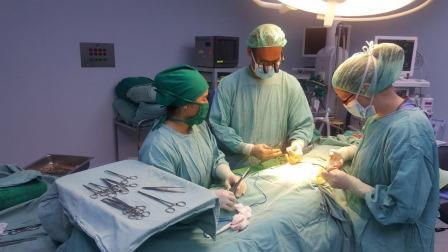
Thus on the first day we operated upon 19 patients, which can be taken as a great success and which shows how well organized everything was. On the whole we have operated upon 119 patients with 149 processes, which means that up to 25% of the patients have been operated upon for more than one process in the same act. All the cases in CMA regime were discharged without problems or post-operation complications immediately noticed. Since in “Cirujanos en Acción” we consider that our missions also help formation,
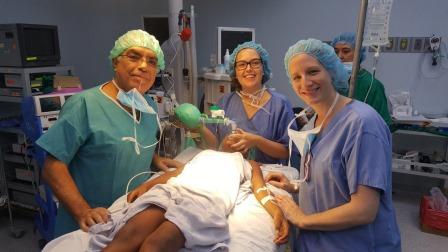
I organized with Dr Falcones a programme of clinical sessions each morning from 10 a.m. to 10.30 a.m. for the whole staff connected with the Surgery Service and the Surgical Block; we also collaborated in cases of a special difficulty and complex abdominal wall, so that we carried out 11 giant eventrations (two associated with right colectomy), one coledoco-duodenostomy and 8 colecistectomies by laparoscopic way, all successful except for one patient with a deep infection which was treated in a conservative way without any difficulty. At each moment we have had exact information as to how the patients were doing, so that we visited them at their places on admission and each day whether any patient operated by us under CMA regime or visited in Urgencies; when this has happened it has been due to minor complications.
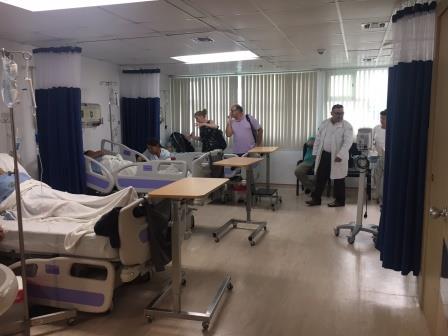
If there is something I have learned in these 3 missions is the key role of the infirmary. The all out work of Paco, who places the material or takes out the patient or works as surgical helper, and I don’t want to leave out the roll of the licensed Marlene and Liliana, and of all their students who have worked with us all this time and have been essential for the operation of so many patients.
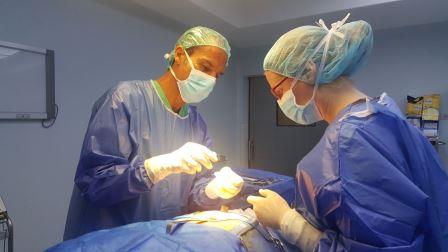
In order to get the most from our work the time for meals was 30-45 minutes in some of the small bars around or in the “shopping” in front of the Hospital. We also operated on Friday October 6th in the evening and on Saturday October 7th in the morning. The moment to relax each day was always theend of the work, never before 20-21 p.m., which allowed us in some of the multiple “burger pubs” of Santo Domingo to share with the whole team gossip, laughter and refreshments (local beers chiefly) often accompanied by Dr Falcones and our local anaesthetists, the popular Francisco and Raúl Castillo.
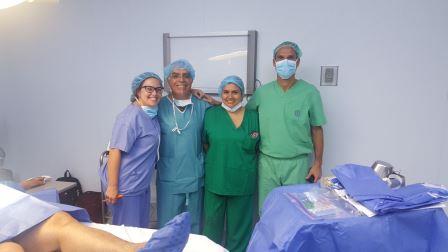
Sunday October 8 was really our only full rest day, and we went to see the community of Red Indians (or Tsáchilas) who have lived historically in that zone, and who since a few years form part of the social and political activities. The last night was special as we decided to invite for supper all the directors of the Hospital, the infirmary staff and the surgeons from the Hospital Surgery Service, so that we all enjoyed ourselves in a very good way. We enjoyed local gastronomy and the ceviches, meats, “guata”, and other typical dishes from Ecuador.
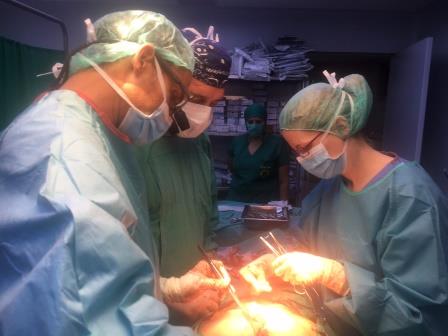
To say goodbye, and coinciding with some acts commemorating the 40 anniversary of the creation of the hospital, Dr. Kathia Tinizaray on behalf of the hospital Gustavo Domínguez Zambrana gave us this plaque-trophy recognition of our work that we Honor and finish giving full meaning to the work that we have done there.
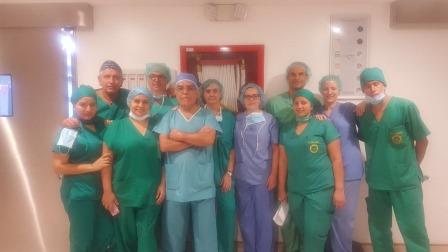
Cesar Ramirez
